A road less travelled
If you are like me, when you hear the word Kosovo you glaze over a bit, vaguely remembering they were heavily involved in the horrific Balkan wars of the 1990’s, and you’d probably say they came out second best. All true, and in the super-complex geo-political, religious, cultural and historic setting that these countries find themselves so tangled up in, Kosovo had few shining moments. Their biggest moment came when they declared their independence from Serbia in 2008 and with big dollops of international help they struck out on their own. And we wanted to get a glimpse of this new country.
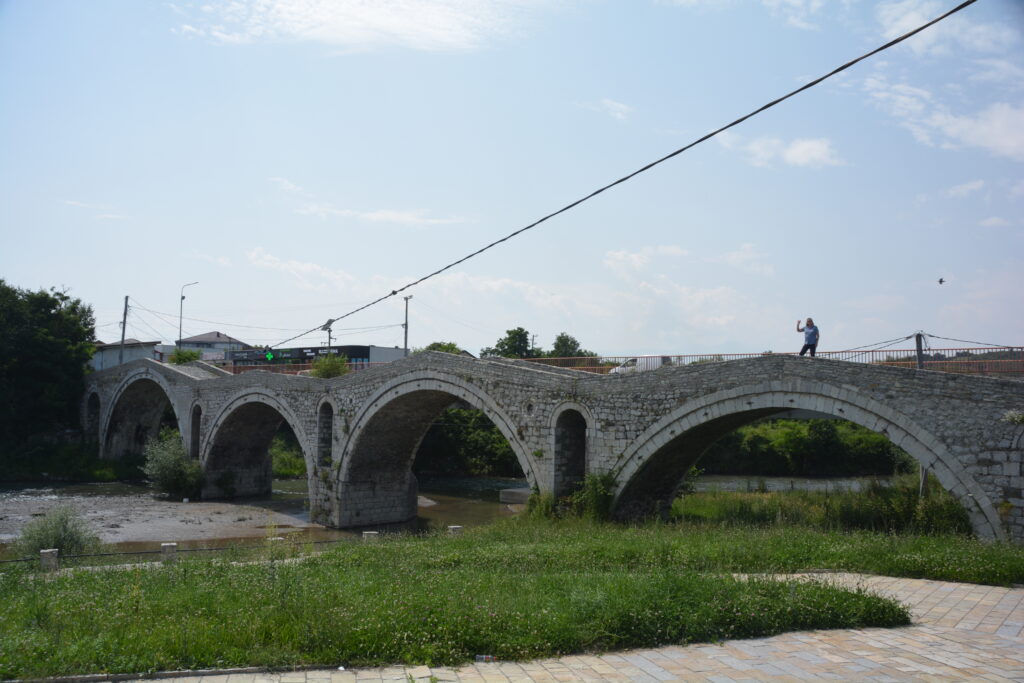
We crossed the border into Kosovo at 1,850 metres (5,750 feet) and immediately plunged down the mountain to the first community we came to, Radavac. It was past 6pm and we had just had a brutal driving day through the rugged mountains of Montenegro. We were buggered.
We hit the flat terrain, pulled into the first café on the road and asked if we could camp the night in their carpark down the back. We couldn’t believe the response. The owner immediately said yes, yes no problem and took me out the back to show me where we could park, very happy and very friendly without a word of English. Others dropped by later and were equally friendly. Our time in Kosovo had got off to a great start.
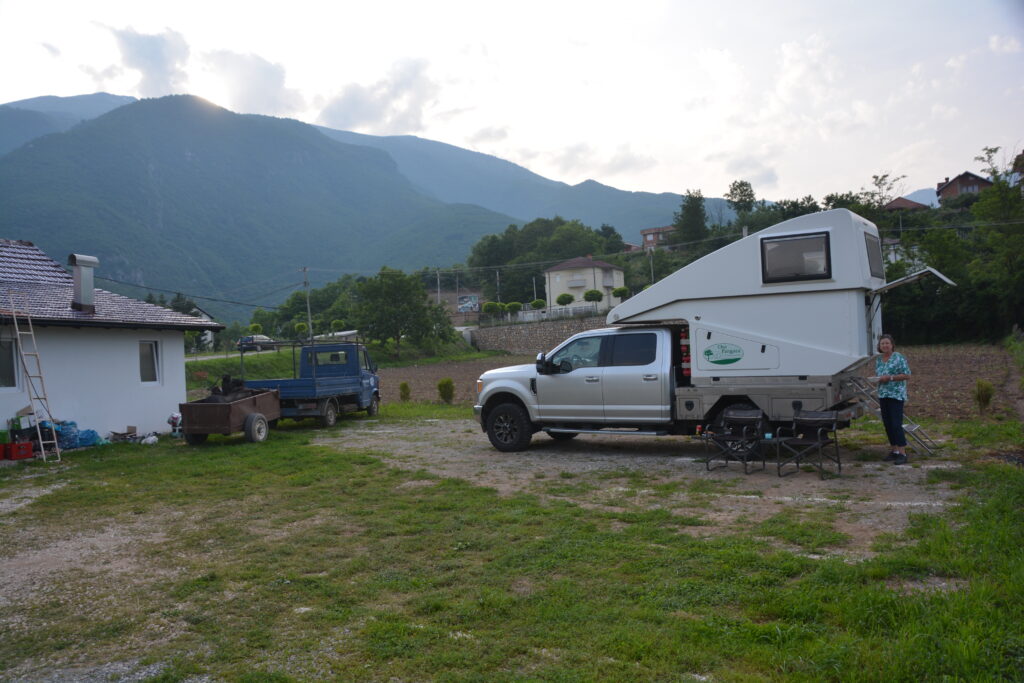
They say the history of Kosovo depends on who you are talking to and it doesn’t take long for us to understand this. We ventured into the regional town of Pec (or Peja) to wander amongst the hundreds of shops in the Old Bazaar and marvel at the melting pot, churches and mosques almost side by side, men dominating the coffee shops but women – some wearing head scarves while others very attractively and westernly dressed – going about their shopping, teenagers looking like they’ve just flown in from Sydney, most of the buildings and streets decidedly tired. Kosovo has many faces.
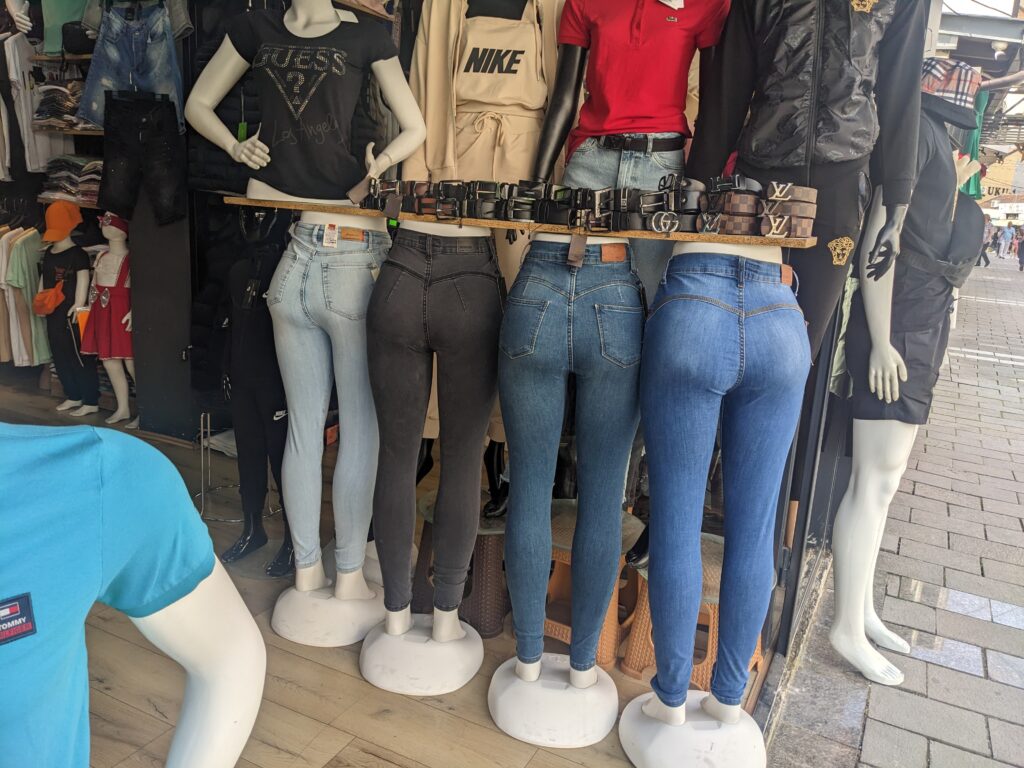
One face, a very sad face, we saw everywhere as we drove through the beautiful rural farming countryside was the last stage of war. War memorials featuring elaborate headstones to the fallen were seen in every village and on the sides of the roads. This is the ultimate cost of war, thousands of people, mostly young men, forever remembered as best the survivors can after a brutal war. And for every older person we saw we knew each of them would have a very sad story to tell.
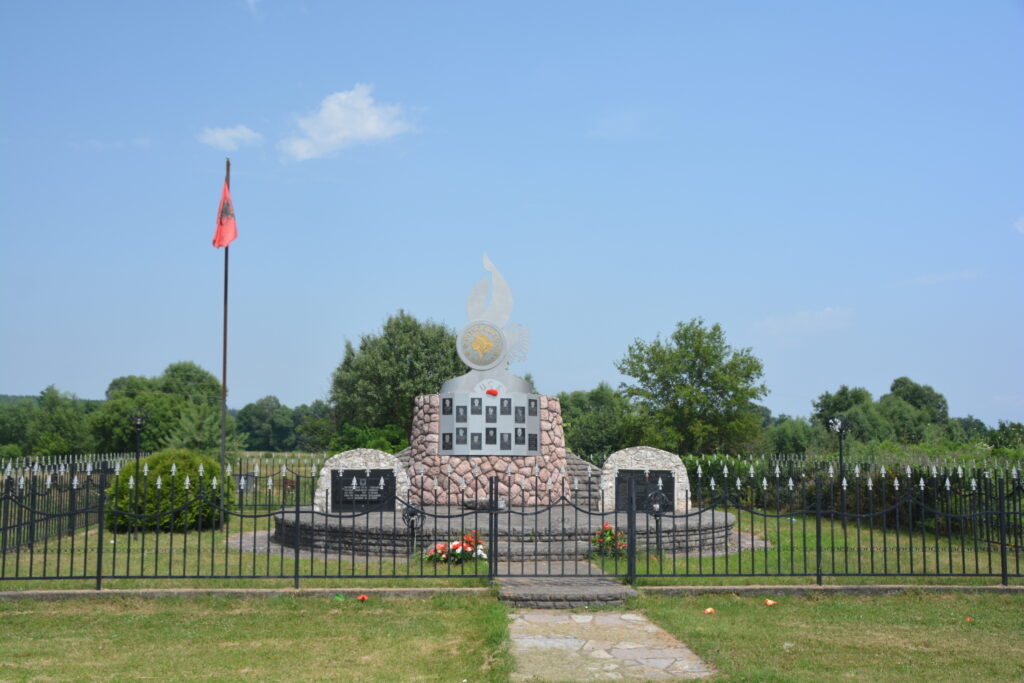
Kosovo is also fortunate to have a number of ancient reminders of their past and we visited two of them south of Peja. First we stopped at the 13th century Eastern Orthodox church the Patriarchate of Peja with it’s stunning religious frescos still adorning all their walls.
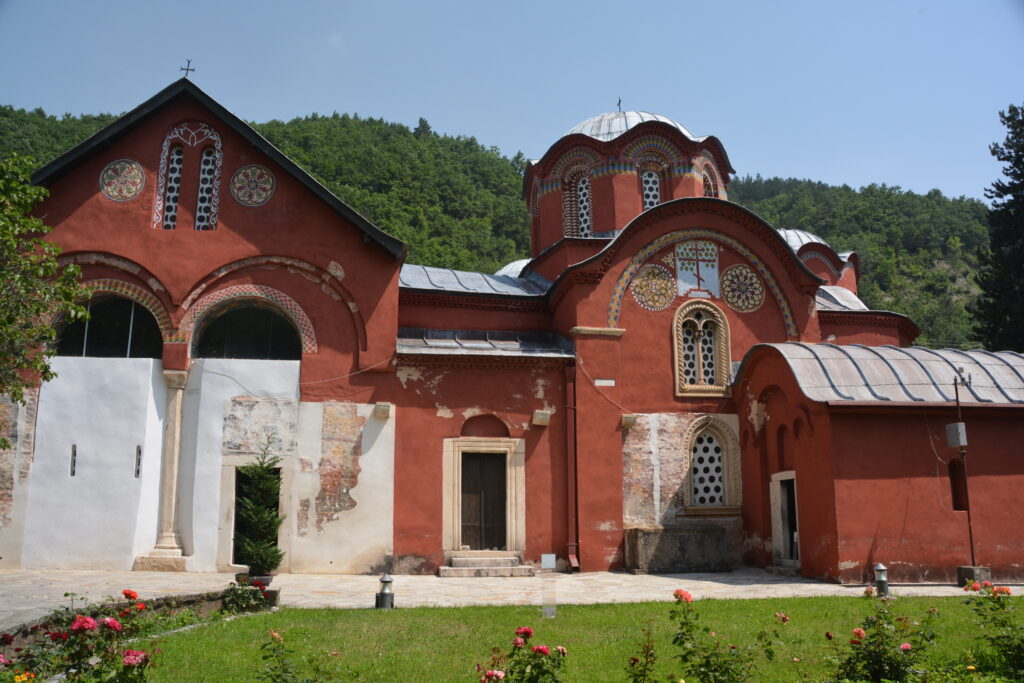
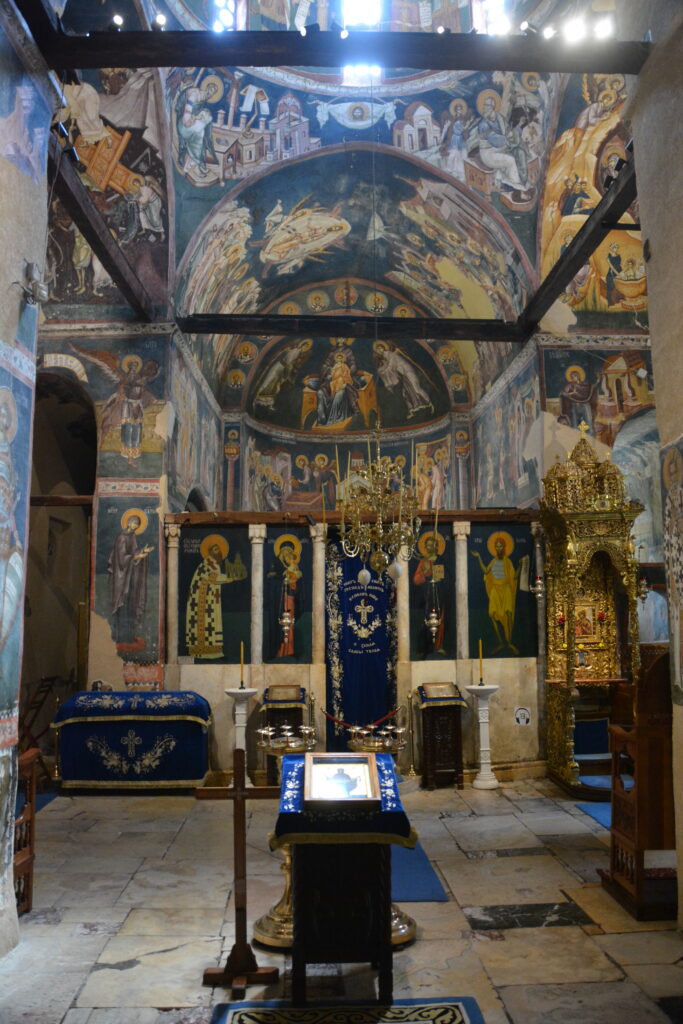
Their preservation, beauty and the significance of their survival left us shaking our head, especially since hundreds were destroyed during the war. Buzzing with what we’d just seen we drove an hour more and visited the 14th century Visoki Decani Monastery and church which featured United Nations guards who were protecting this dazzling monastery from ‘bad guys’ as one guard told us.
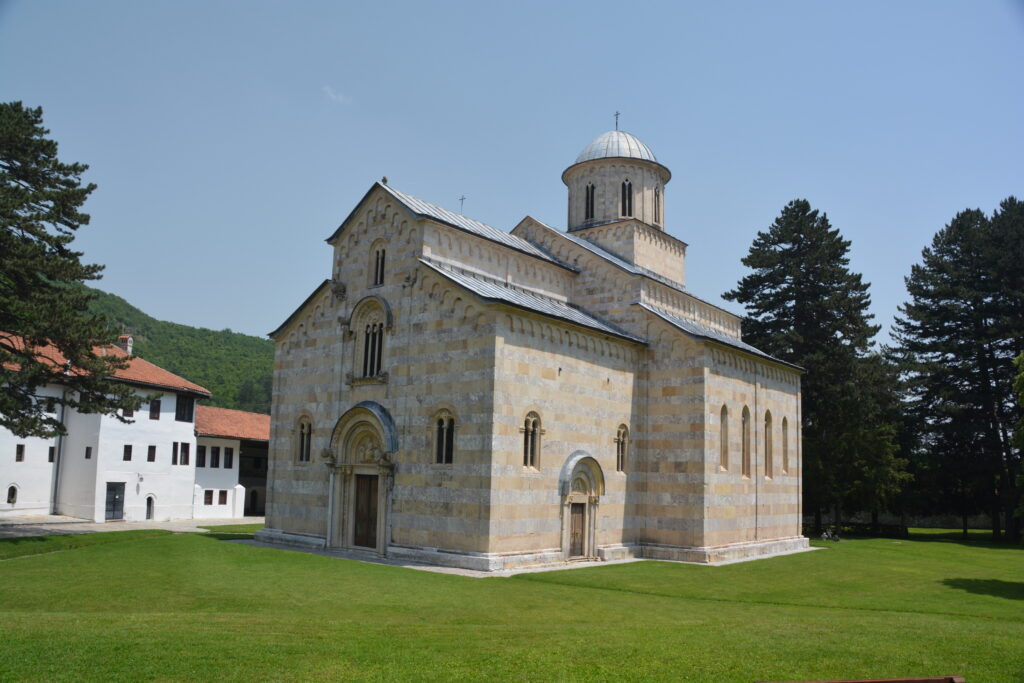
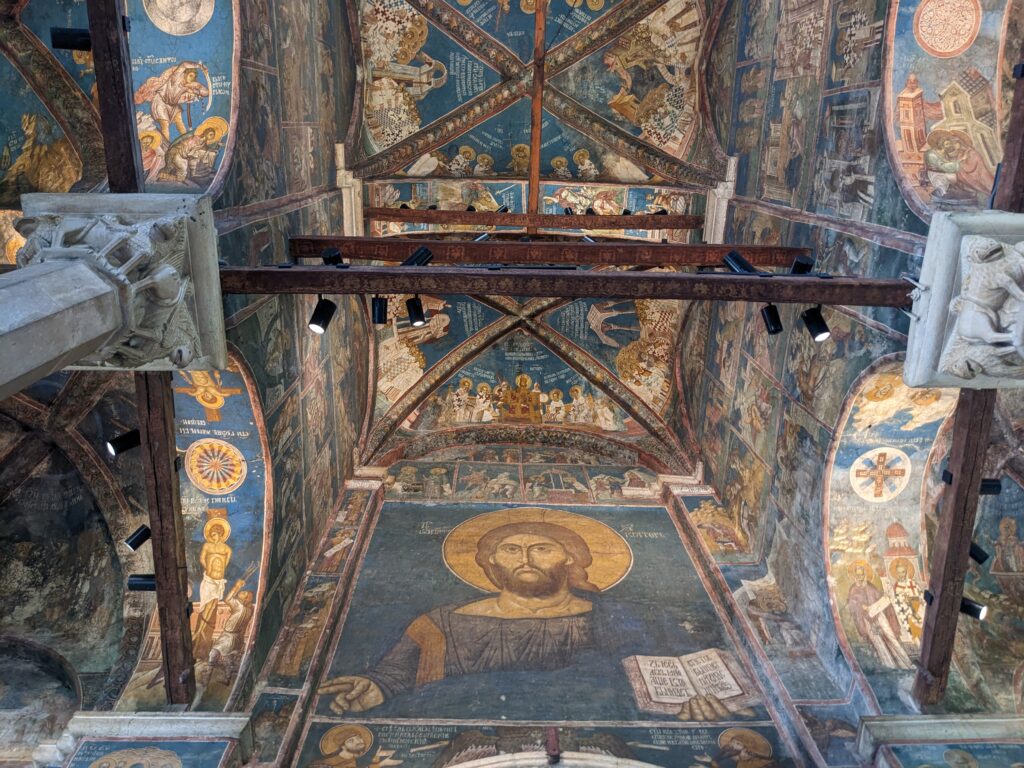
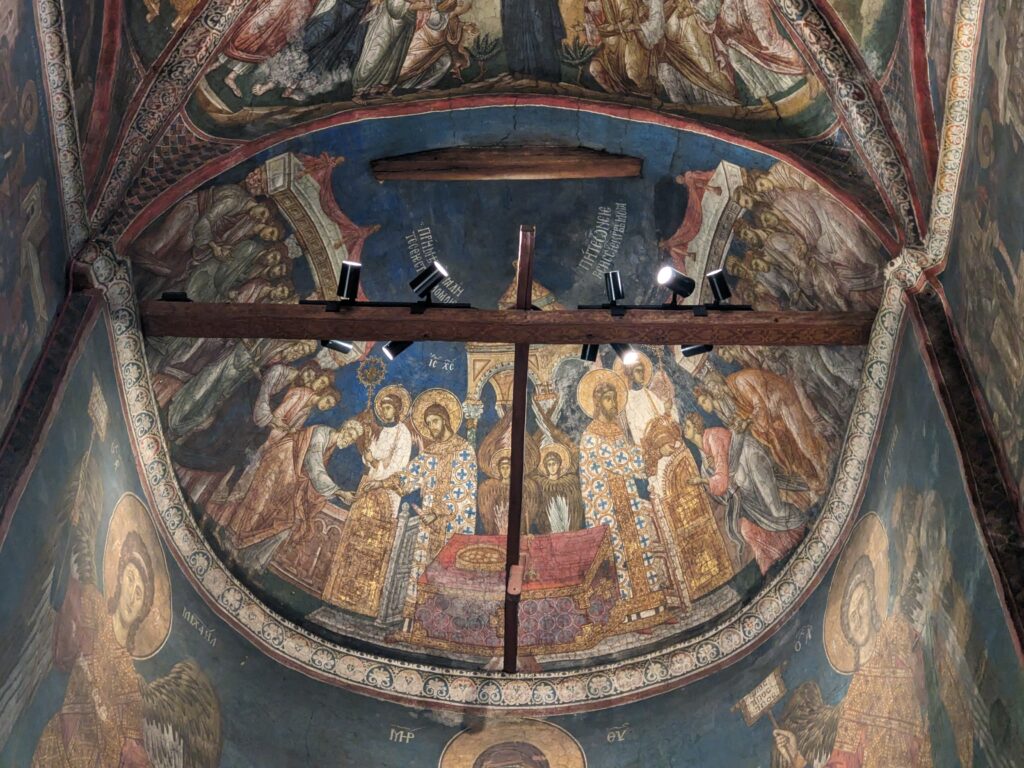
But we were on the move and headed further south, crossing the border into North Macedonia late in the day, sad to leave Kosovo after this brief visit but much wiser and richer for having made the effort.
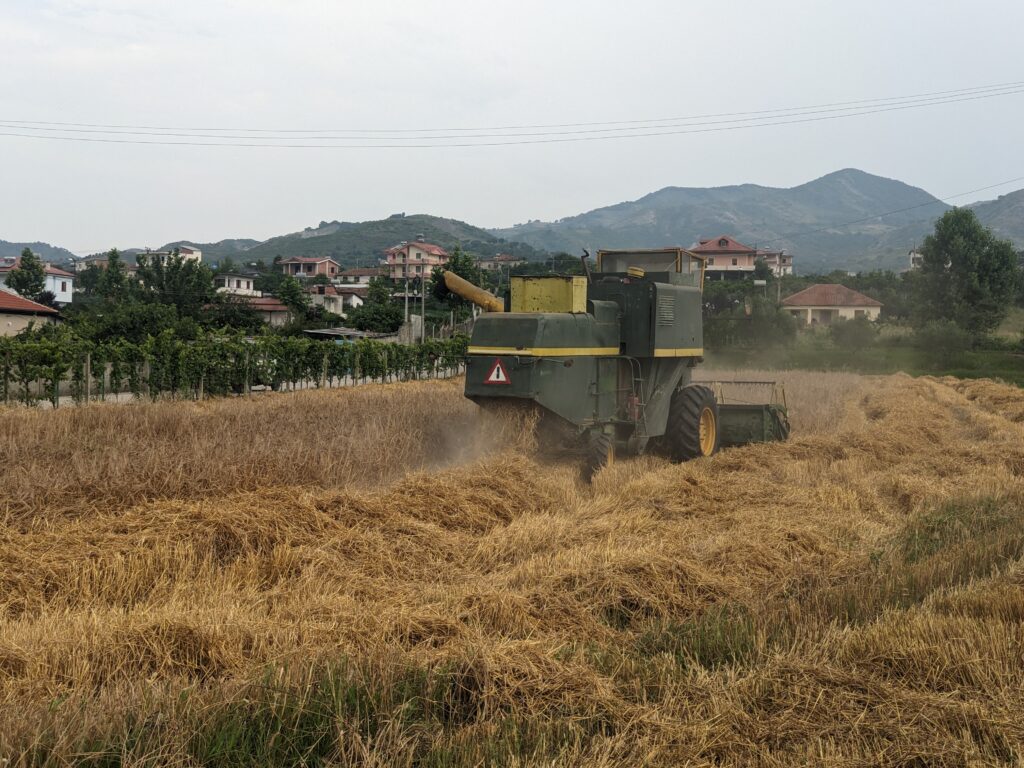
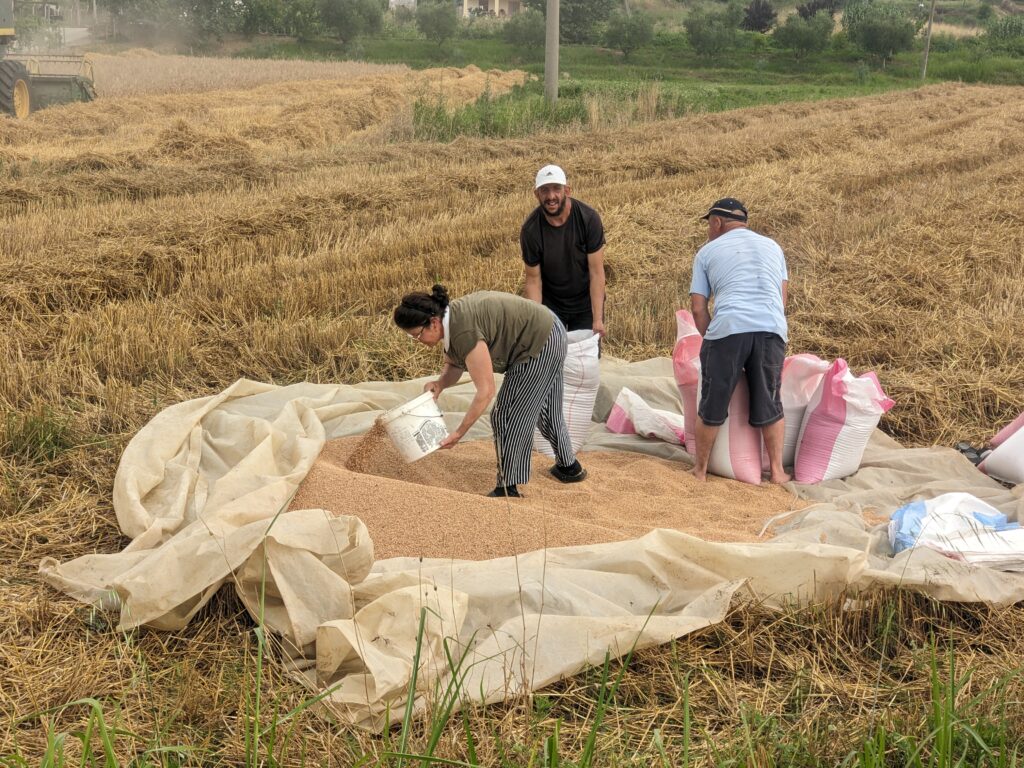
North Macedonia is another one of those countries like Montenegro which is never in the news and flies below everybody’s radar. It is also a cross roads to this complex region because amongst everything else that is happening in the region North Macedonia also features a very strong Greek Macedonian element and cultural identity.
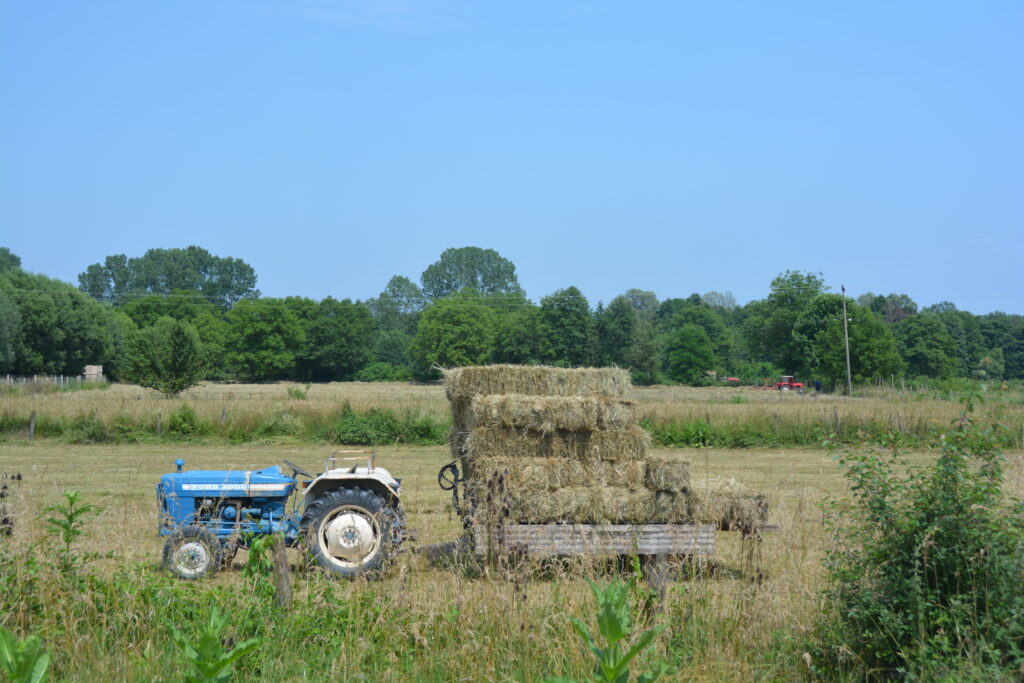
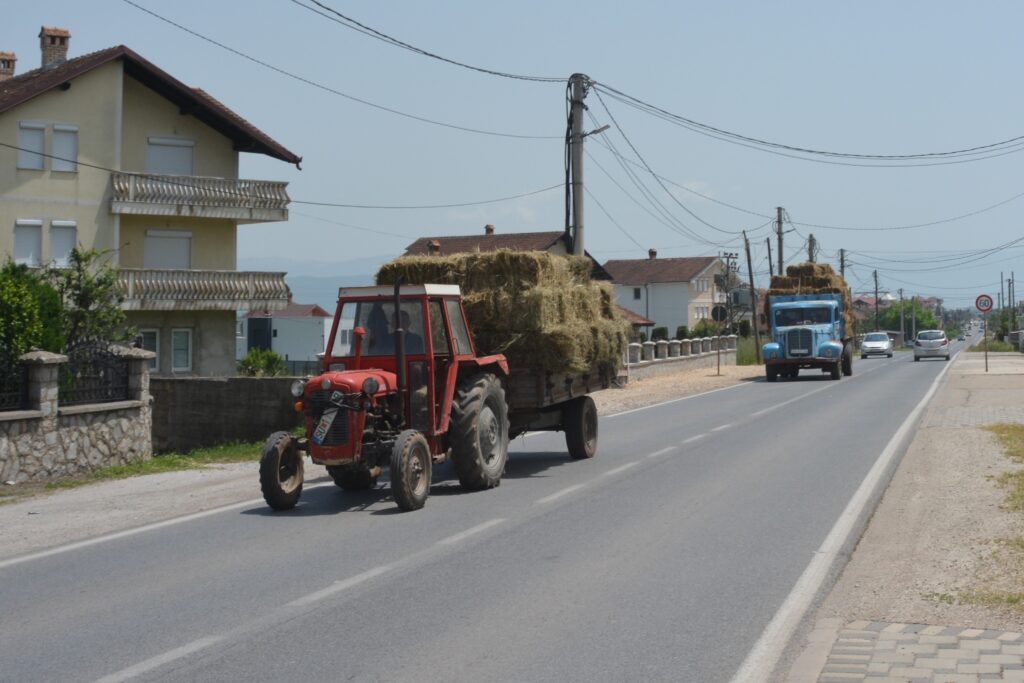
We drove to the Matka Canyon Natural History Park, thinking we would find a quiet place to camp. Instead we were greeted by literally hundreds and hundreds of Macedonians, most with their families, who had ventured out on this warm evening to see this impressive water-filled canyon. And as we made many new friends and heard many others read out ‘California’ from the license plate as they walked by, sometimes taking photos and whispering their amazement at how handsome Tramp was, we set up camp amongst it all, and why not?
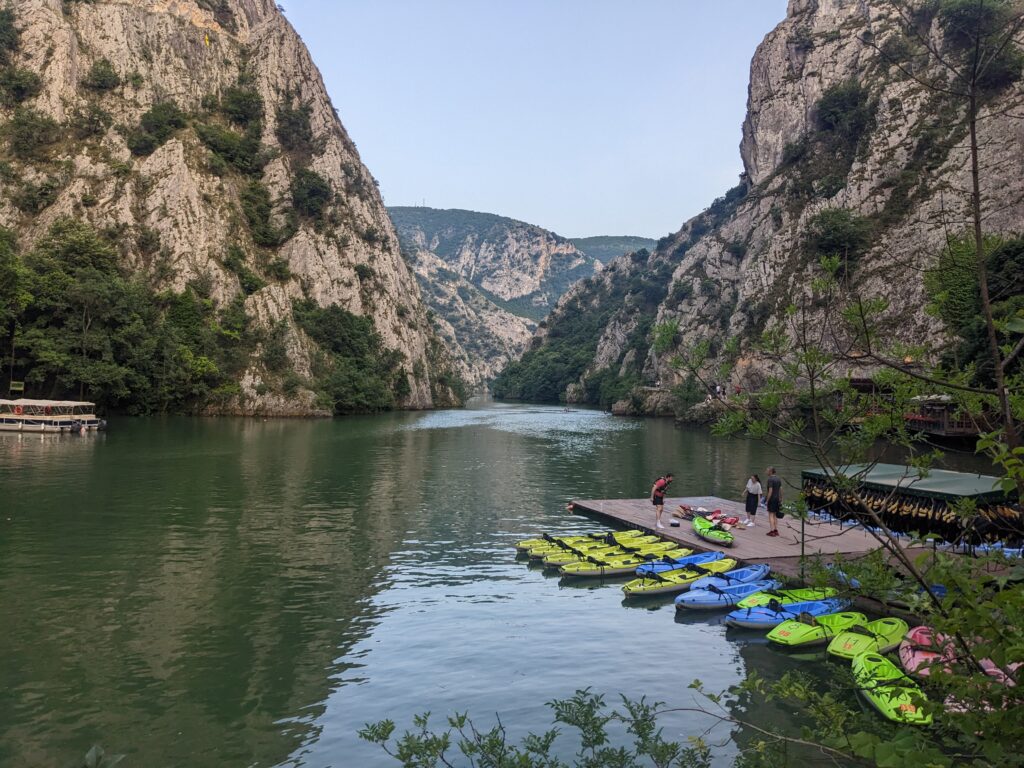
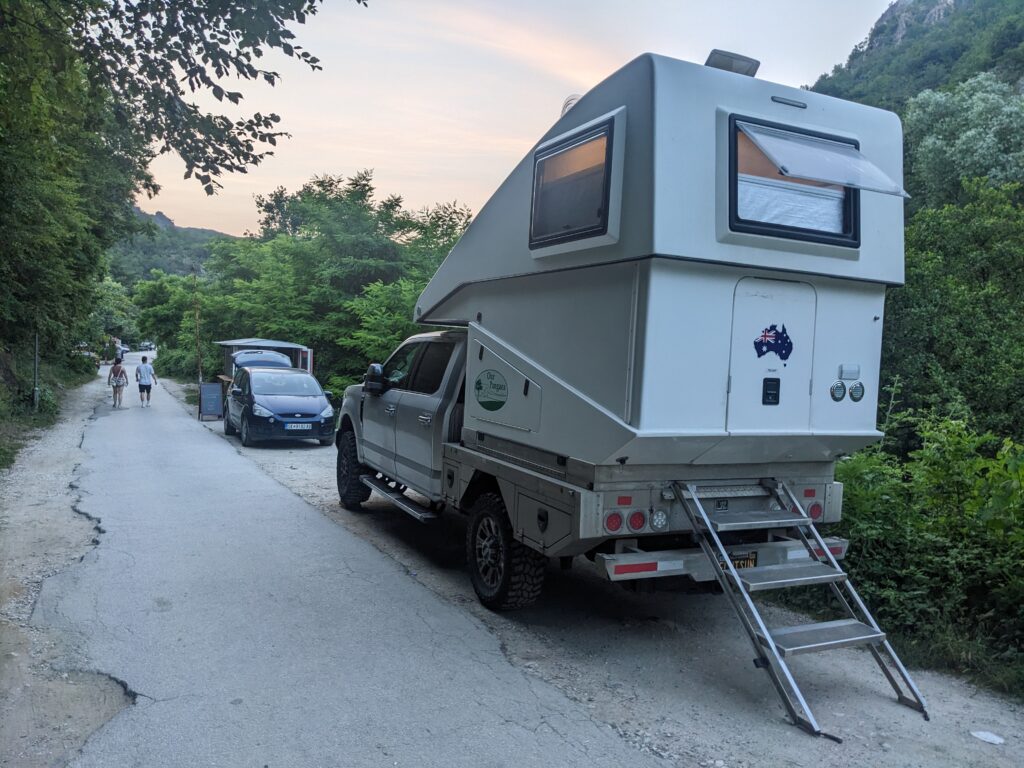
We are trying to get the balance right between getting to Turkey as quickly as reasonably possible and seeing some of these wonderful sights along the way. We had fallen into a comfortable pattern of detouring for two or three places to see each day while still moving in the right direction. So we’re not lingering but we’re not a speeding Macedonian driver.
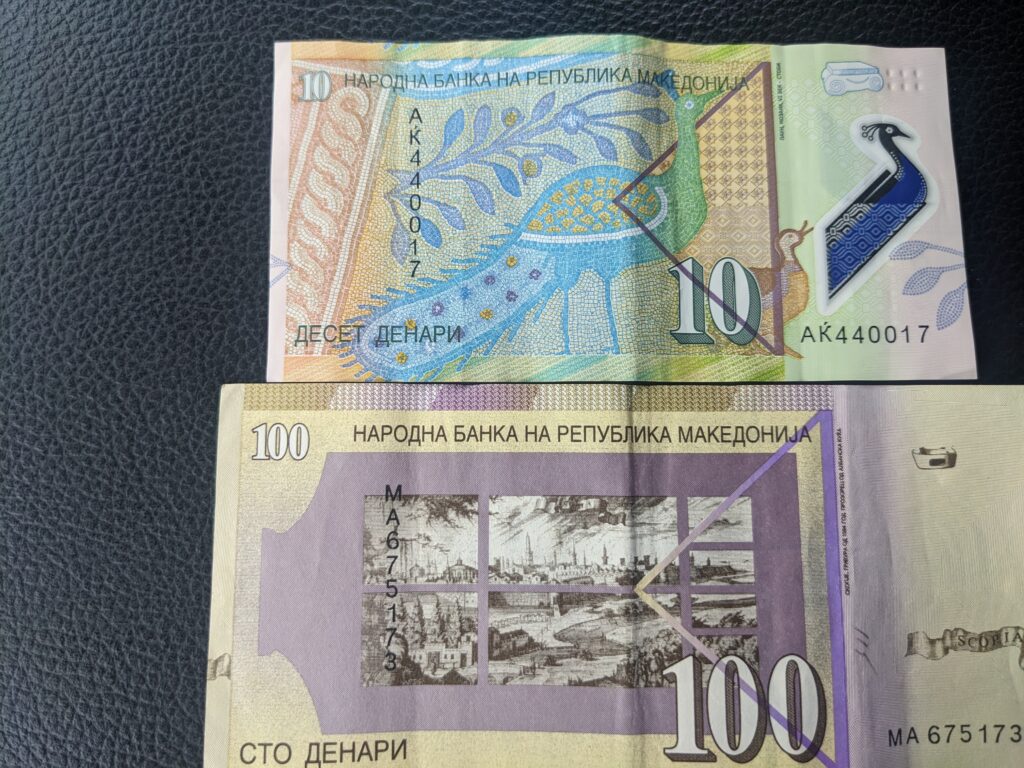
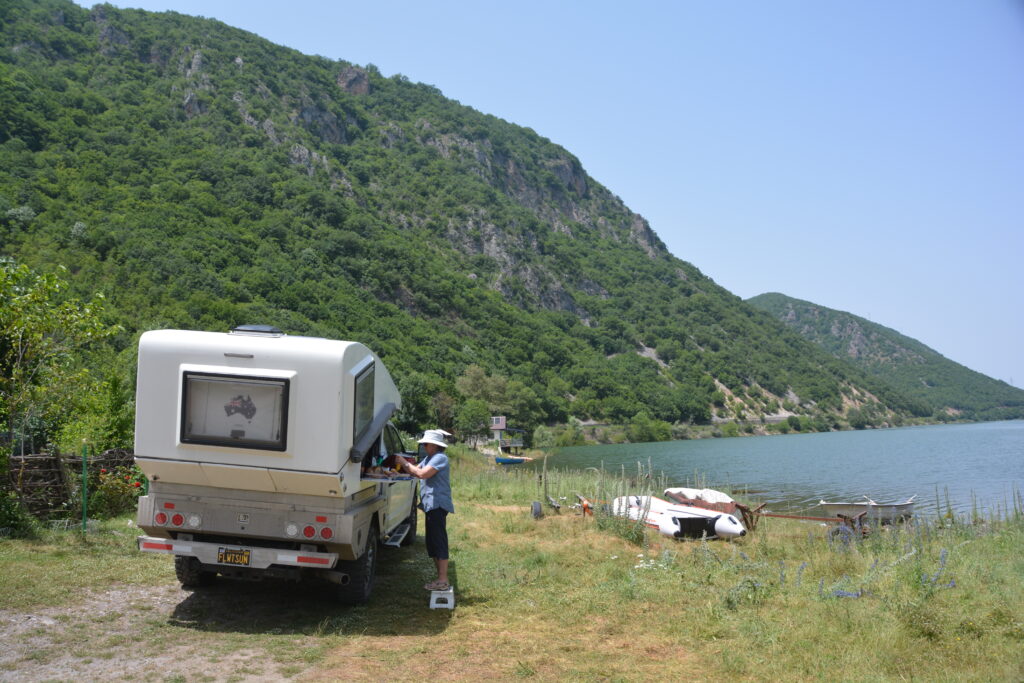
We followed the supercheap toll road (each pay station was less than a dollar) and then headed up a steep winding road into the formidable mountains to our west and Mavrovo National Park. Tucked away in a narrow valley is the stunning St. Jovan Bigorsky Monastary, a thousand year old eastern orthodox church with beautiful religious frescos on all the walls and ceiling plus amazing hand-carved pulpits, chairs and other trimmings. We couldn’t take photos inside but we’ve got the memories.
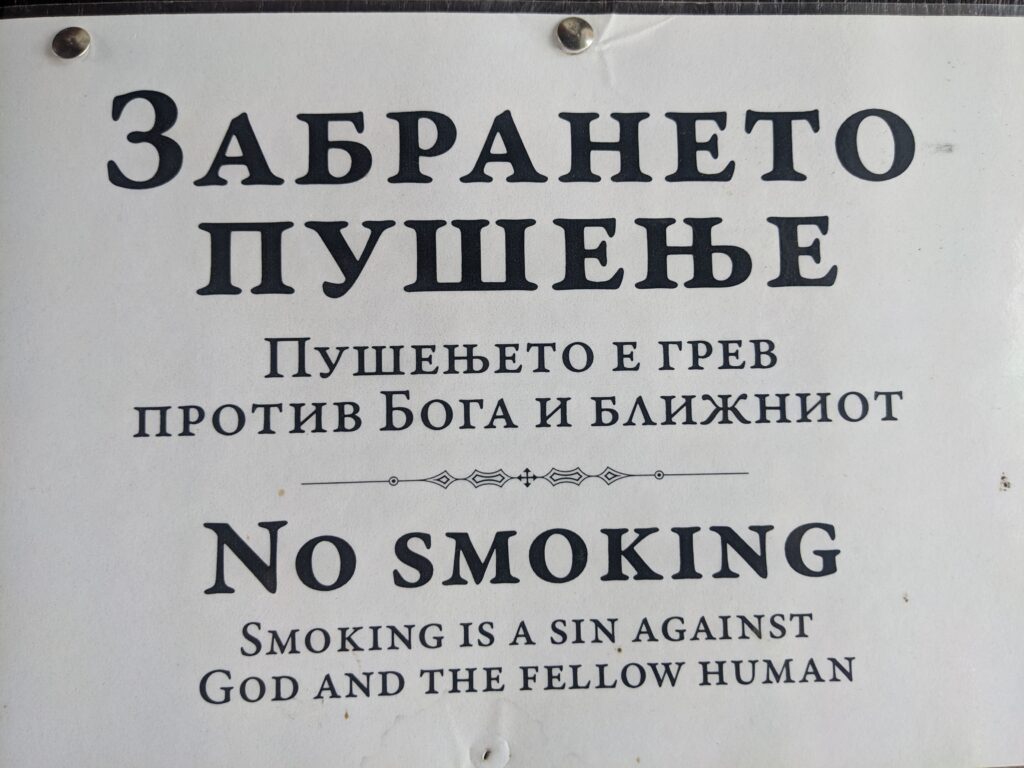
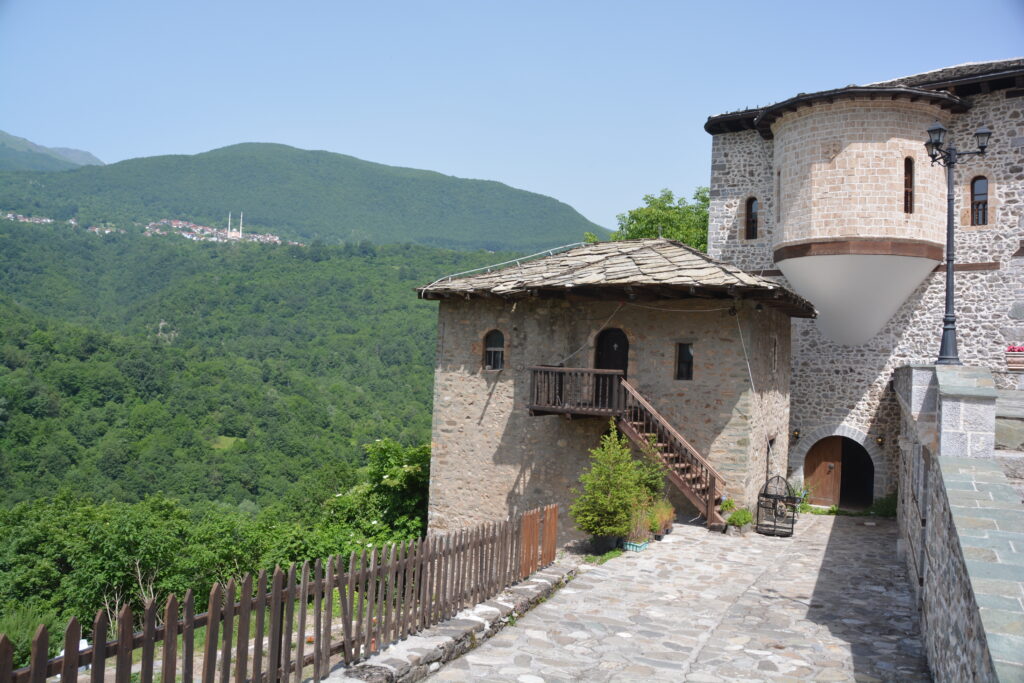
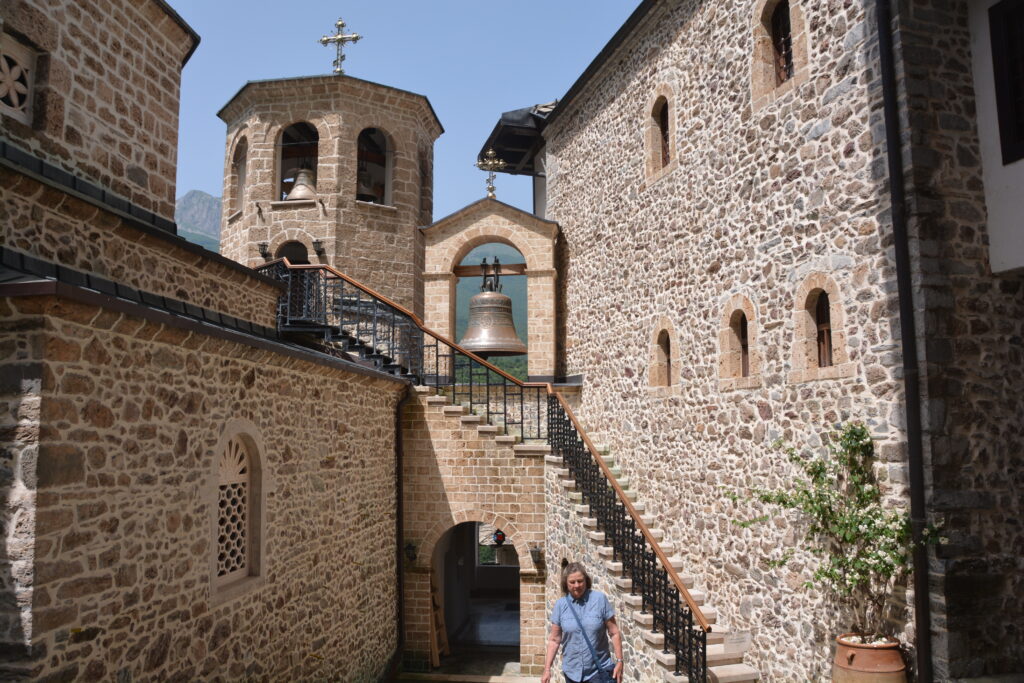
We headed back down the road and southward to the Macedonian tourist mecca of Lake Ohrid, a standout place for people from all over the region to come and enjoy the mountains, lake, warm climate and substantial tourism infrastructure. We could see how this place would draw the crowds, as it had on this day.
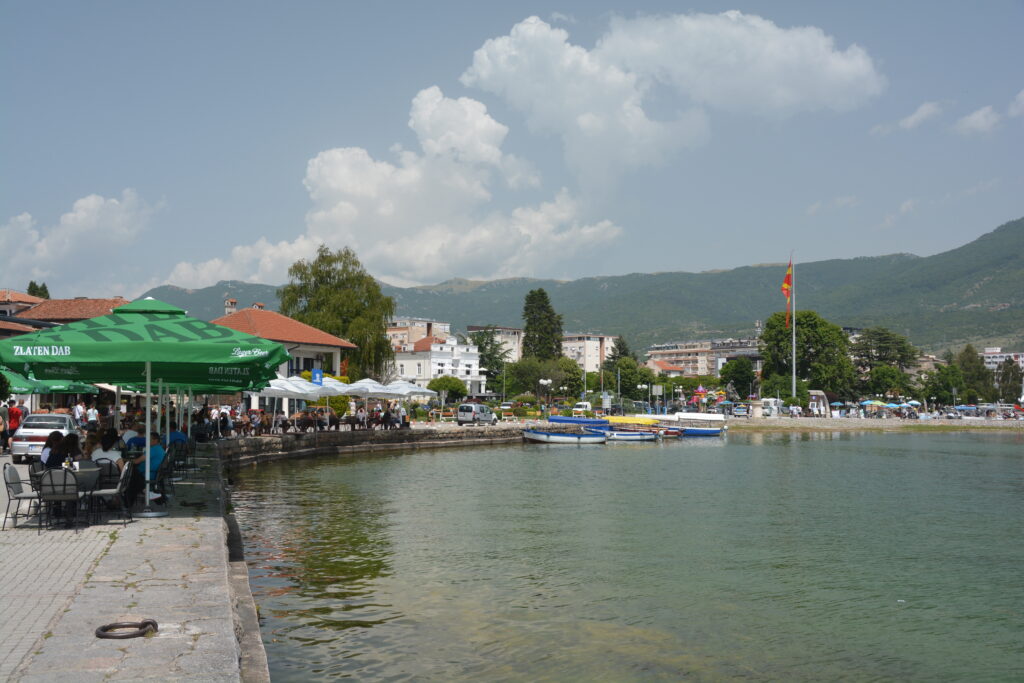
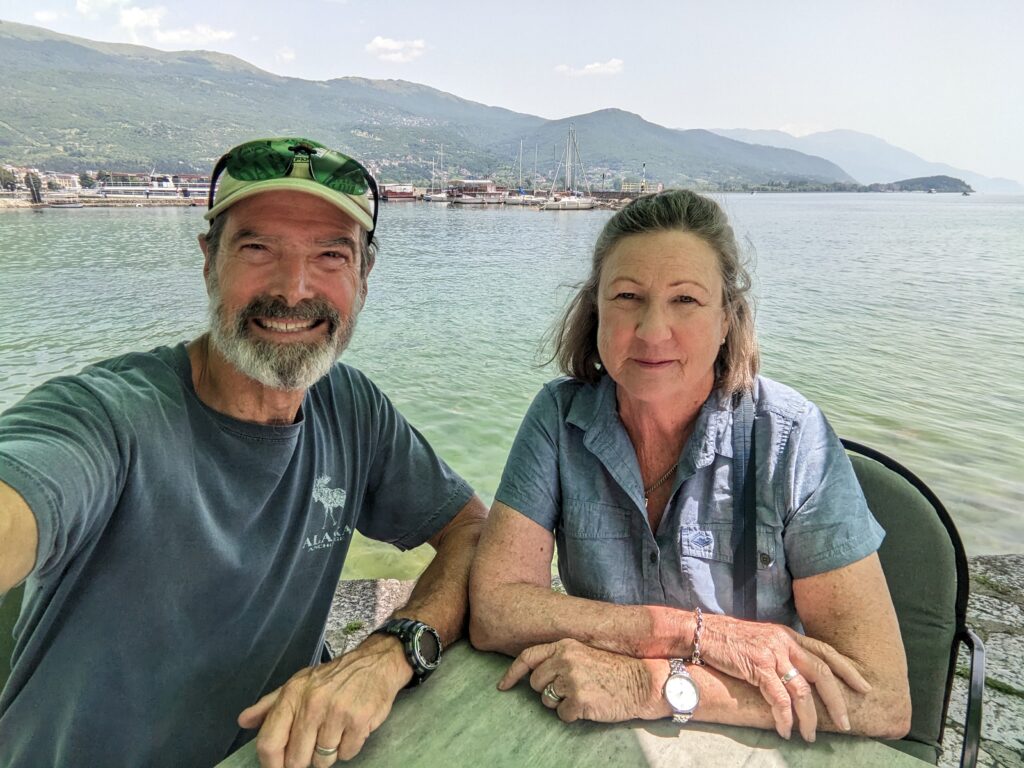
We then easily crossed the border into Albania, our fifteenth country on this trip so far, and slowly followed big lumbering trucks down to the inland centre of Elbasan where we camped in a field run by a family who provided all the necessary facilities.
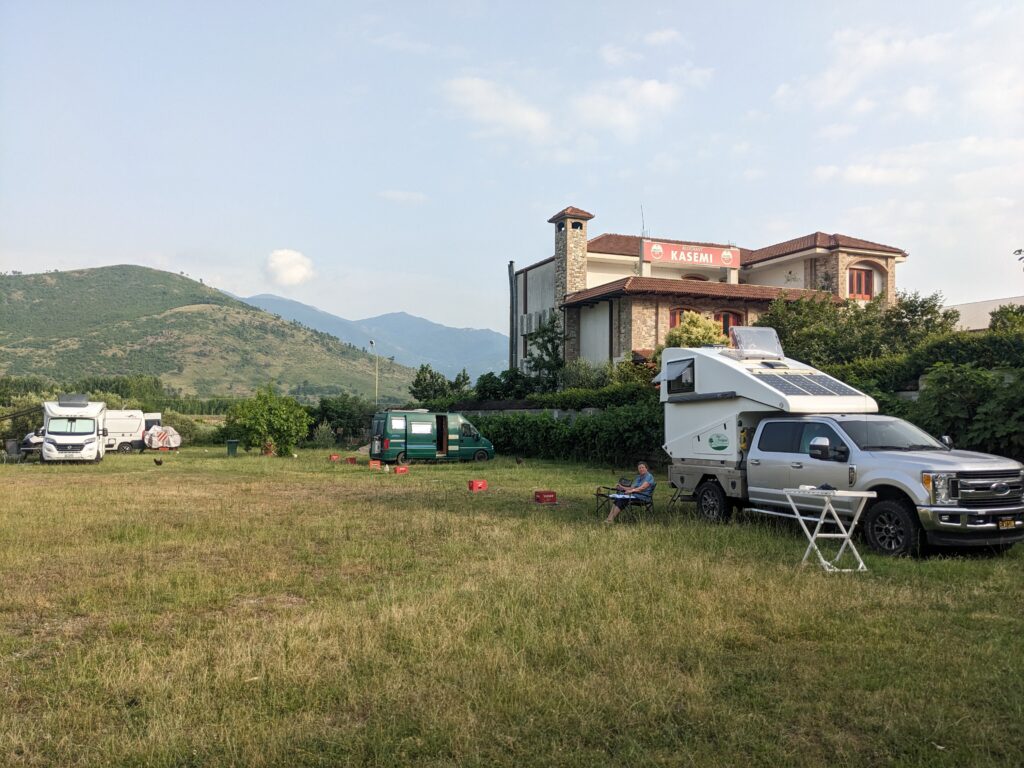
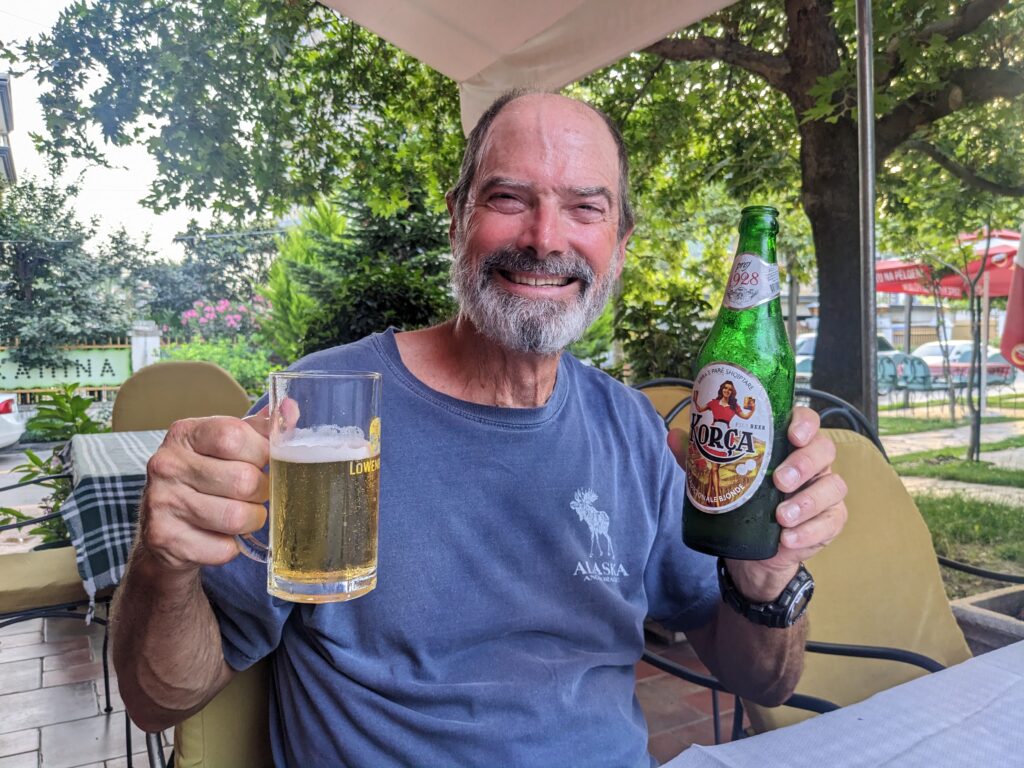
Border crossings have been fairly easy so far, the only slight complication is that they are not used to American vehicles with license plates that don’t have numbers in them. Our third party insurance doesn’t extend to these countries and we have to buy it at the border, sometimes at an outrageous cost. But, hey, what can you do?
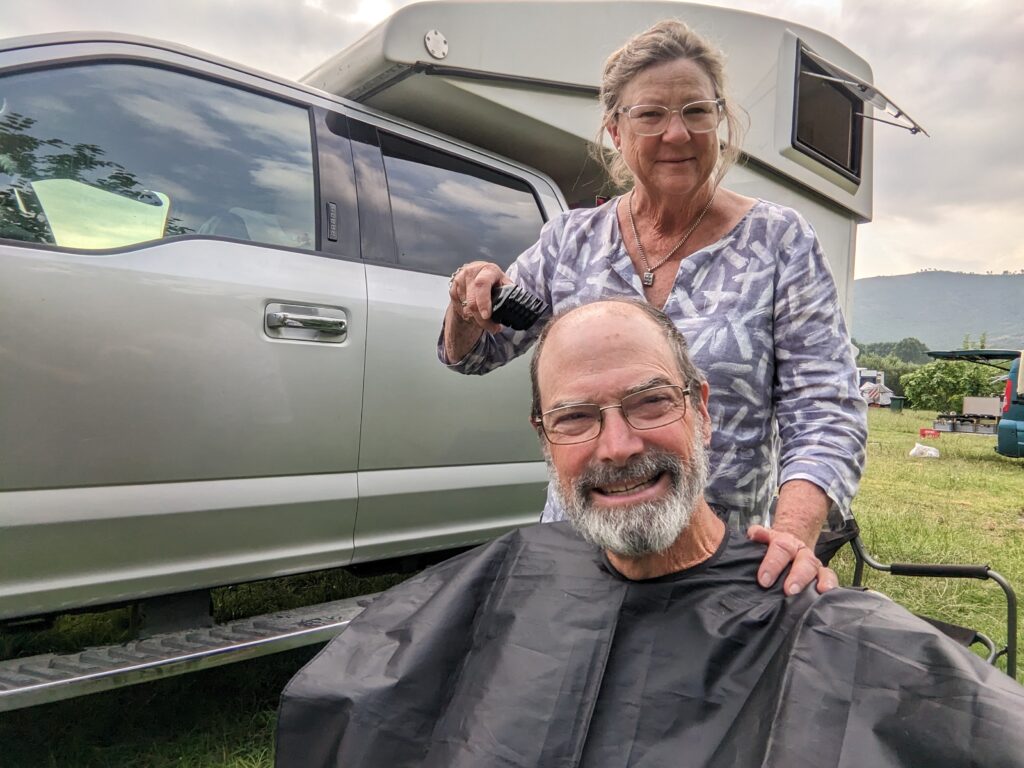
Albania is a bit of an enigma but also a bit of a success story. Buried deep in Stalinism during the 1960’s and 70’s, then switching to a strict Mao-like Chinese system where all farming was nationalised, religion was outlawed and people were seriously repressed, but then, amazingly, inching their way into a flawed democracy in the 1990s and getting stronger ever since. Now a member of NATO and wanting to join the EU, Albania still has a laundry list of problems but they are heading in the right direction, more or less. From what we’ve seen they’ve still got some work to do but given their journey so far they haven’t done too bad.
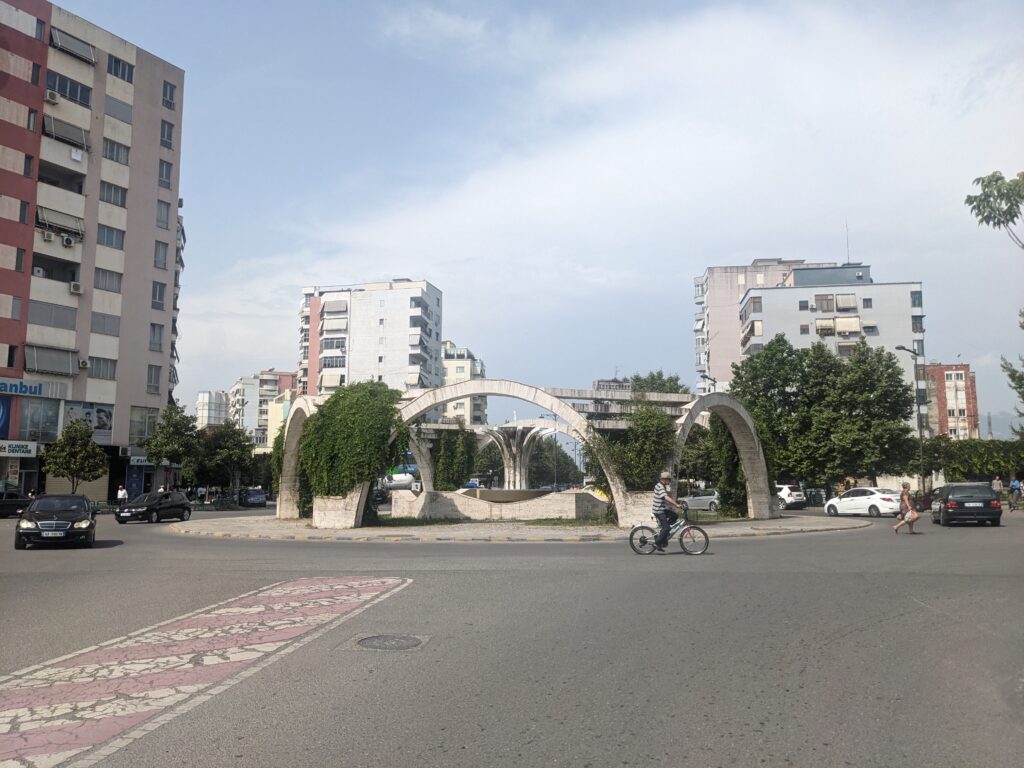
The Albanian coast has built up a bit of a reputation as being a poor man’s holiday paradise, now dubbed the Albania Riviera. Being into coastlines and beaches this intrigued us so we headed that way. Before we got there we stopped at Apollonia, the site of an ancient city built in the BC days and over-run by a slew of subsequent empires over the centuries. Today only six percent of the site has been archaeologically excavated and it still revealed some fascinating leftovers from a very distant past.
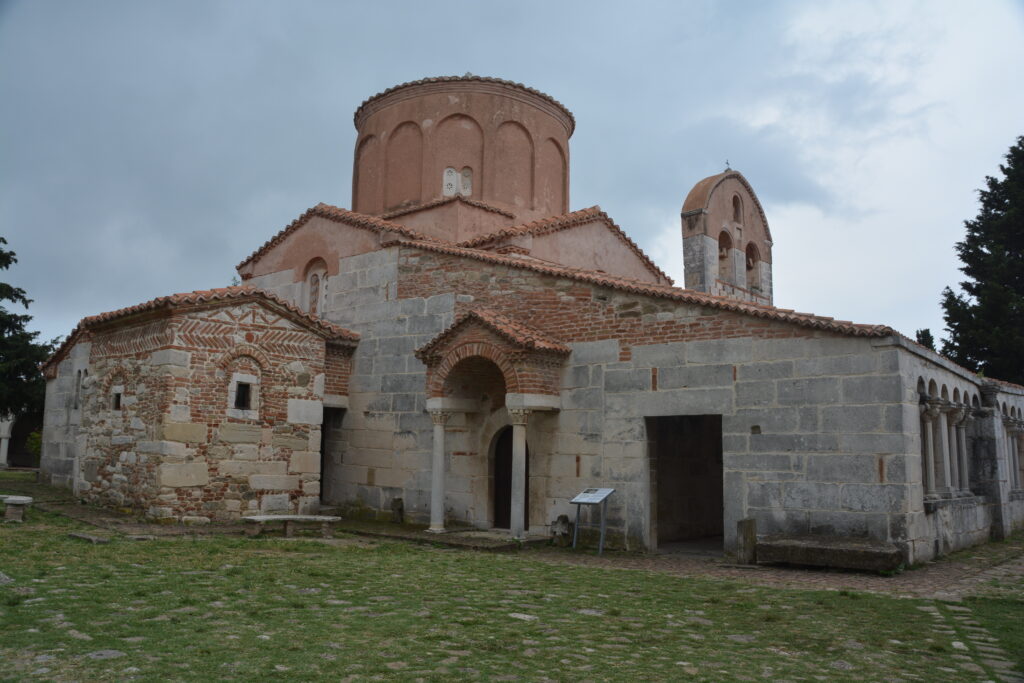
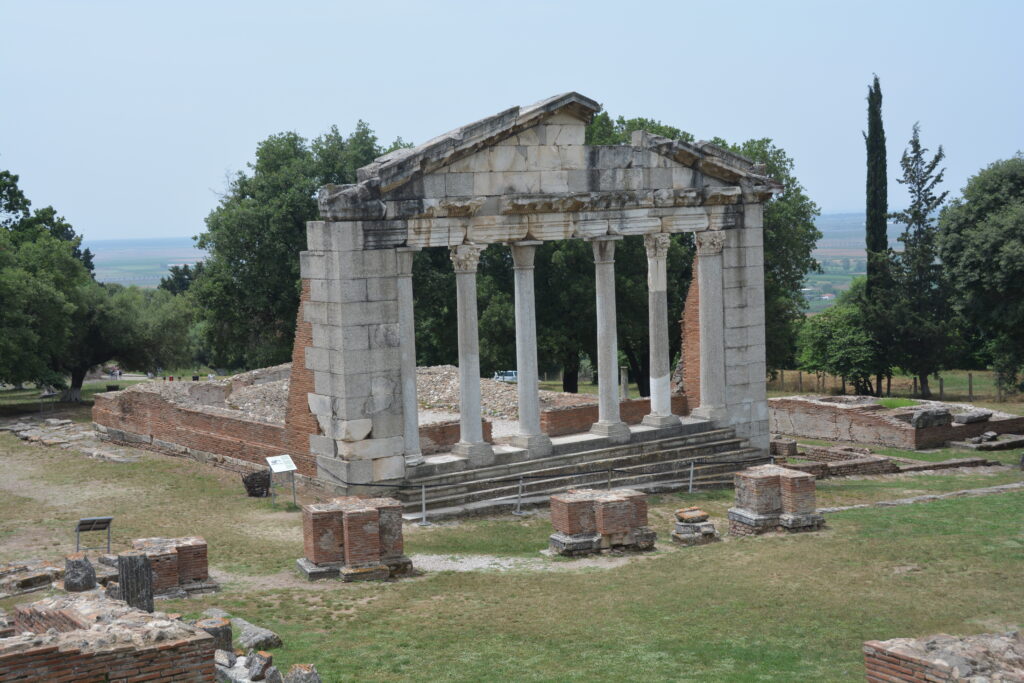
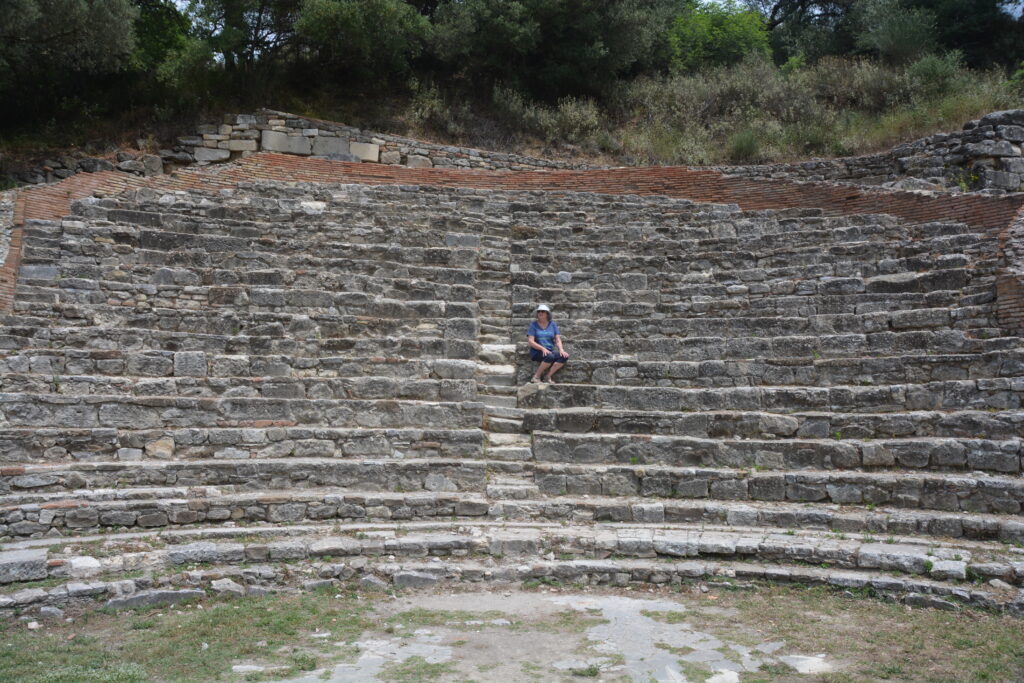
But there’s always the beach and we found it finally at the beachside town of Vlore which featured endless ‘resort’ hotels on the beach, most of them tired and a bit shabby, and a string of ‘beach clubs’ which were private beaches – rocky and gravelly at that – with a long string of beach chairs and umbrellas for hire. It wasn’t exactly our scene but we were impressed at the local hordes soaking up the sun and having a blast.
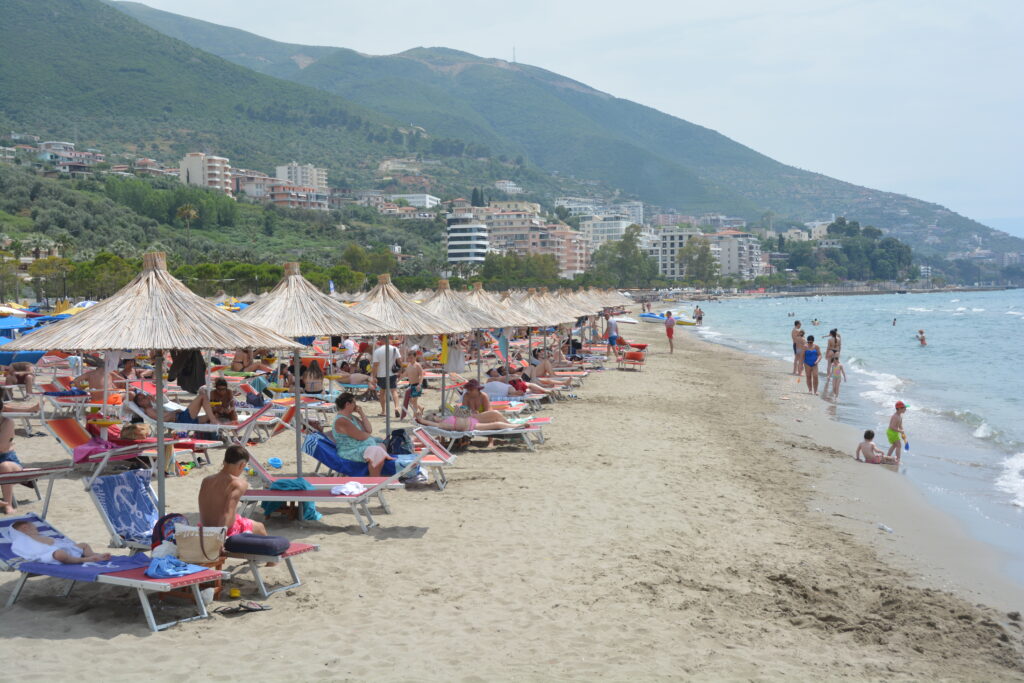
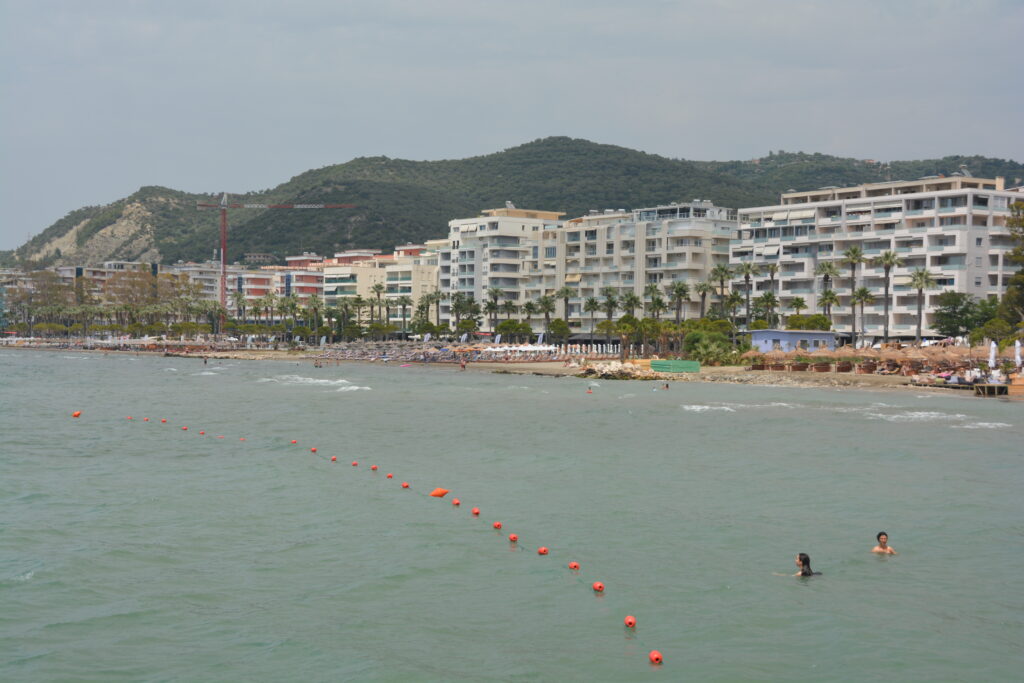
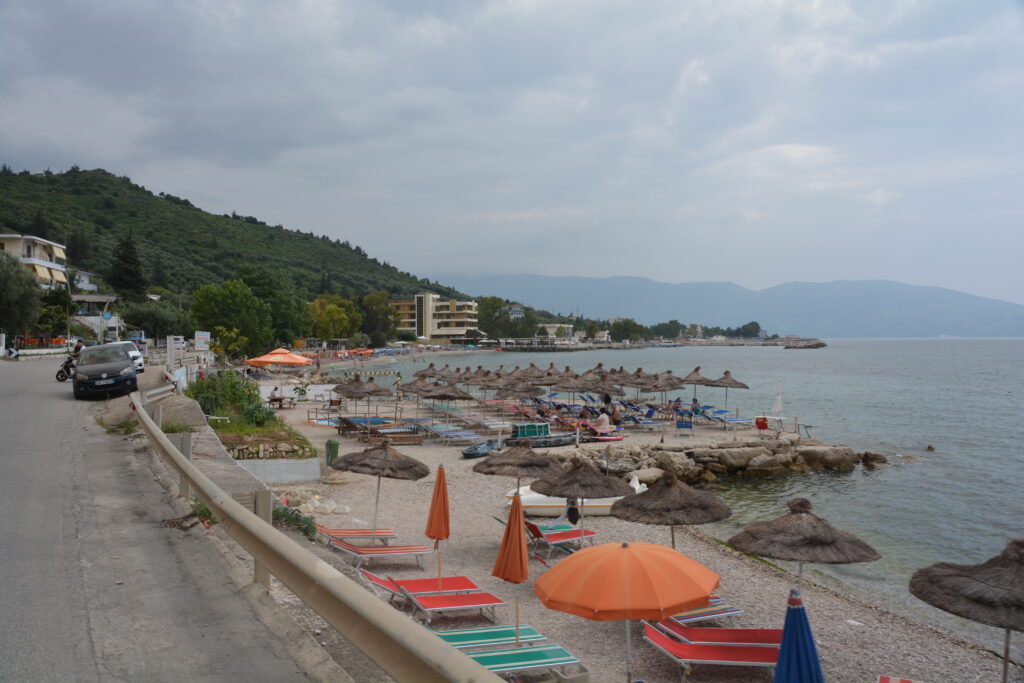
We followed the coast southward, up and over some crazy steep switchbacks and winding roads, hugging the coastline for fear of falling off, and finally settled for the night, backing onto the beach at a place called Borsh Bay. A swim in the Adriatic topped off a fabulous day in Albania.
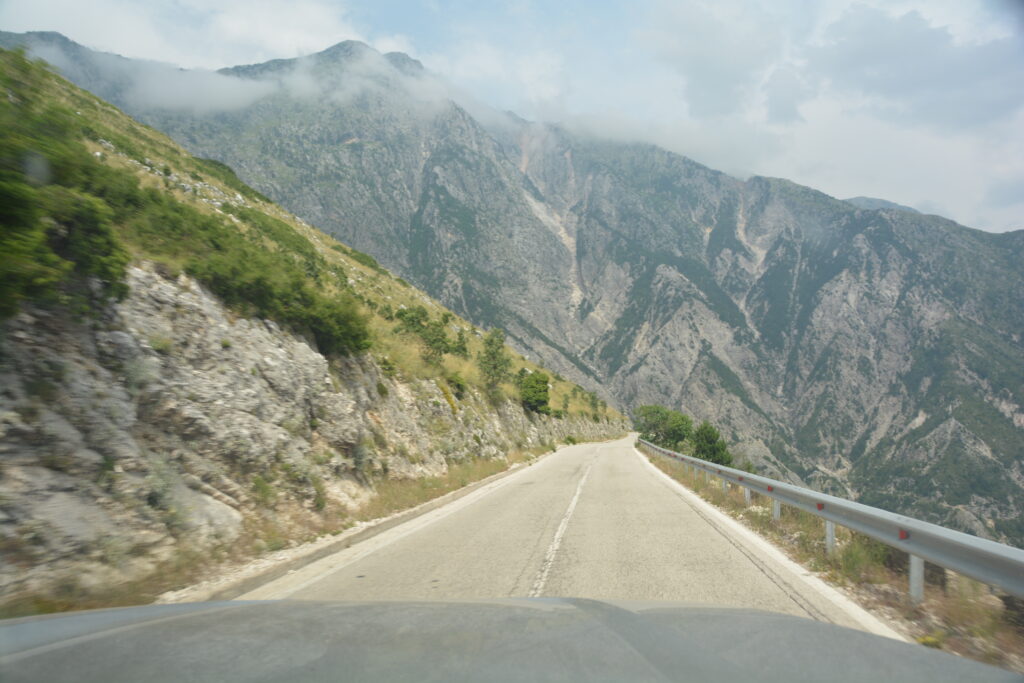
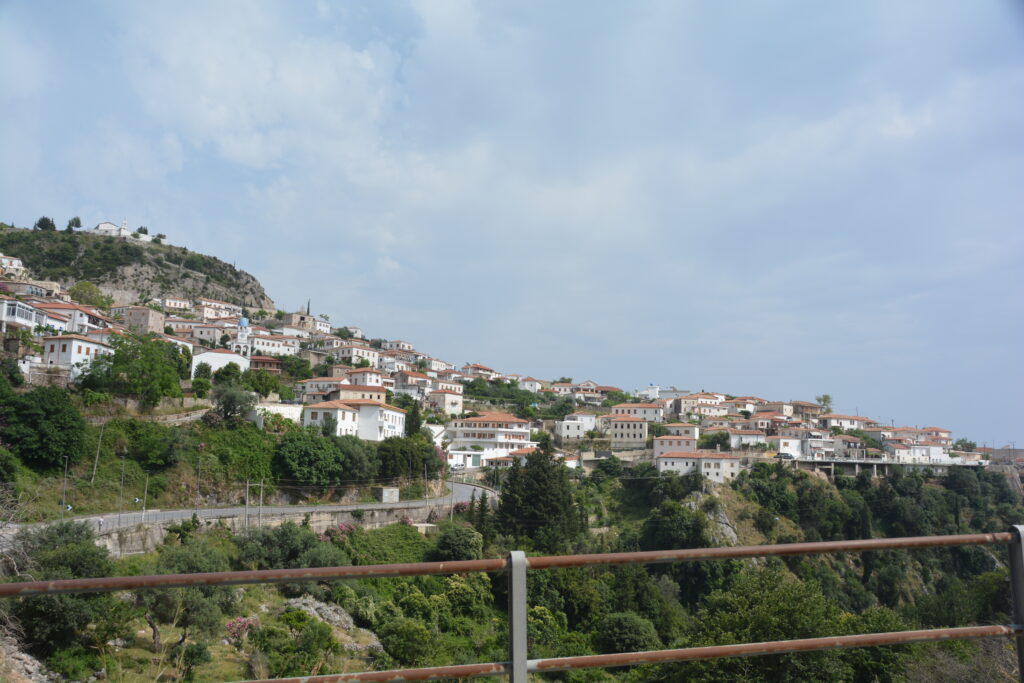
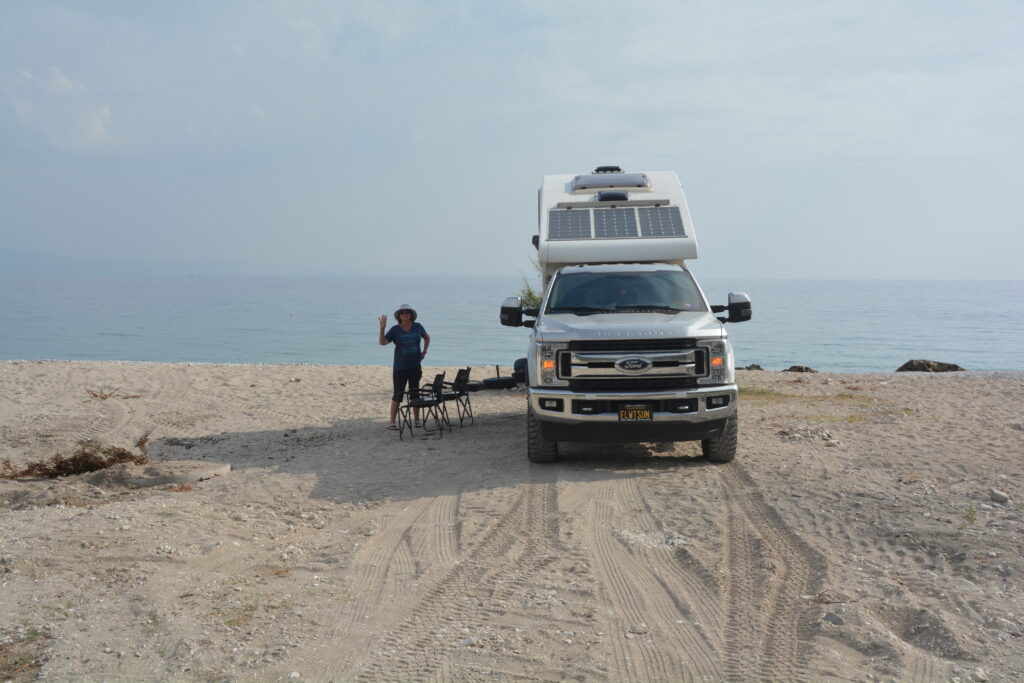
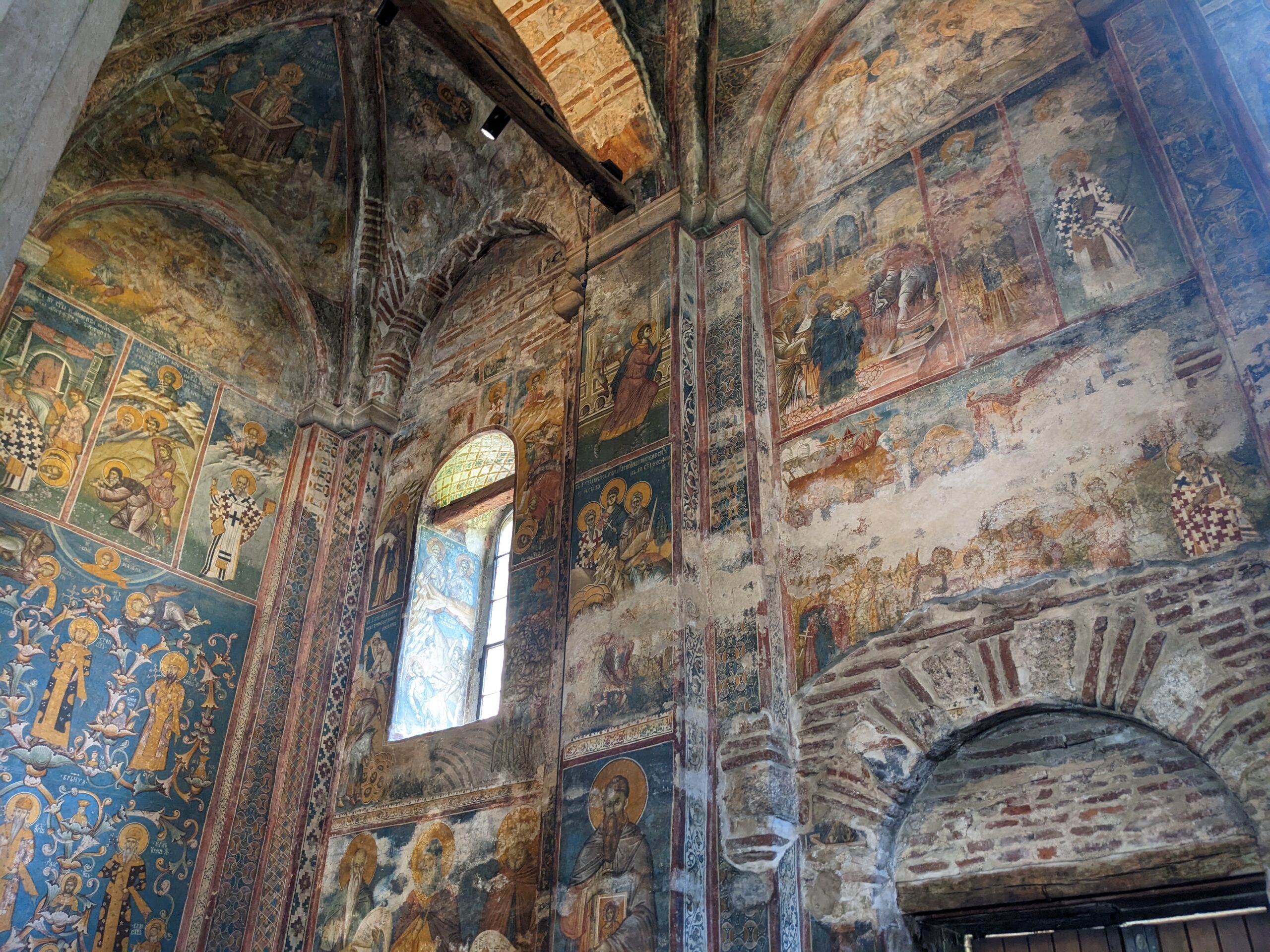
Comments
A road less travelled — No Comments
HTML tags allowed in your comment: <a href="" title=""> <abbr title=""> <acronym title=""> <b> <blockquote cite=""> <cite> <code> <del datetime=""> <em> <i> <q cite=""> <s> <strike> <strong>